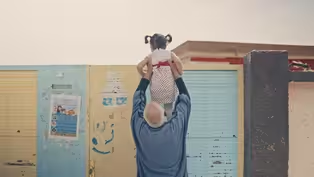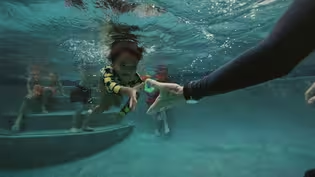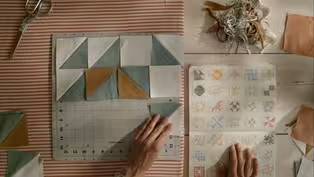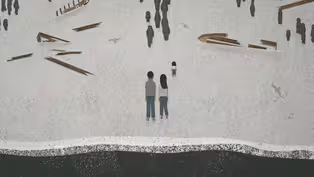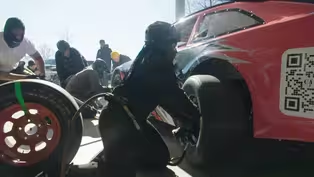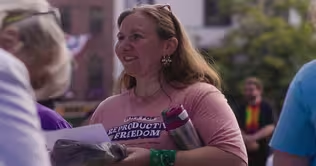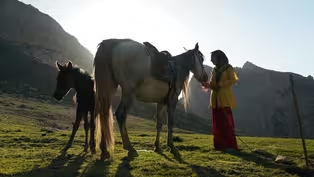
POV Shorts: Chasing Time
Season 38 Episode 801 | 25m 5sVideo has Closed Captions
Photographer James Balog brings the 15-year Extreme Ice Survey project to a close.
A meditative exploration of time and mortality, Chasing Time follows photographer James Balog as he brings the 15-year Extreme Ice Survey project to a close. Accompanied by the Emmy-winning team behind Chasing Ice, the film unveils astounding visual evidence of climate change and spotlights the power of intergenerational collaboration in inspiring hope and action toward a sustainable future.
Problems playing video? | Closed Captioning Feedback
Problems playing video? | Closed Captioning Feedback
Major funding for POV is provided by PBS, The John D. and Catherine T. MacArthur Foundation, the Wyncote Foundation, Reva & David Logan Foundation, the Open Society Foundations and the...

POV Shorts: Chasing Time
Season 38 Episode 801 | 25m 5sVideo has Closed Captions
A meditative exploration of time and mortality, Chasing Time follows photographer James Balog as he brings the 15-year Extreme Ice Survey project to a close. Accompanied by the Emmy-winning team behind Chasing Ice, the film unveils astounding visual evidence of climate change and spotlights the power of intergenerational collaboration in inspiring hope and action toward a sustainable future.
Problems playing video? | Closed Captioning Feedback
How to Watch POV
POV is available to stream on pbs.org and the free PBS App, available on iPhone, Apple TV, Android TV, Android smartphones, Amazon Fire TV, Amazon Fire Tablet, Roku, Samsung Smart TV, and Vizio.
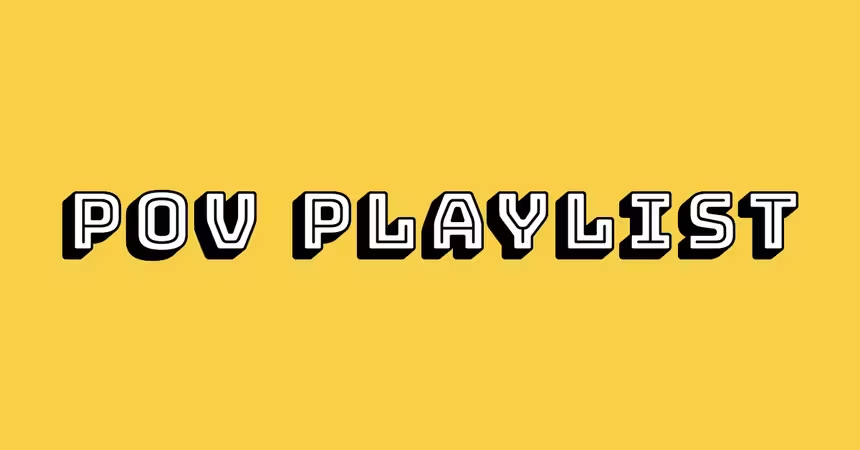
POV Playlist
Every two weeks, we curate a selection of POV docs, old and new, around a central theme. Stream while you can — until the next Playlist!Providing Support for PBS.org
Learn Moreabout PBS online sponsorshipMore from This Collection
Video has Closed Captions
From big city to small town, two stories reflecting contemporary America. (25m 5s)
POV Shorts: The People Could Fly
Video has Closed Captions
A poetic look at roller rinks as sanctuaries for Black culture, joy, and resistance. (21m 48s)
Video has Audio Description, Closed Captions
Ahmed must find a way to get his son’s remains back home to Morocco so he can say goodbye. (40m 19s)
Video has Audio Description, Closed Captions
Kids learn to swim - and, in their lessons, we discover profound wisdom for all. (21m 9s)
Video has Audio Description, Closed Captions
Two stories of quilted heirlooms and generational nostalgia. (24m 35s)
Video has Audio Description, Closed Captions
Families traverse tradition and memory in marking new phases of life. (25m 5s)
Video has Audio Description, Closed Captions
A portrait of the experiences unique to displaced queer people fleeing violence at home. (25m 5s)
Video has Audio Description, Closed Captions
Two stories of women who trailblaze and persist. (24m 50s)
Video has Audio Description, Closed Captions
Two stories excavating distinct portraits of place, politics, and economy. (25m)
Video has Audio Description, Closed Captions
Memory and resiliency through Detroit and Canarsie’s unique relationships to water. (23m 26s)
Video has Audio Description, Closed Captions
Religious leaders' use of the law to advance an unexpected religious freedom argument. (23m 49s)
POV Shorts: The Dream of a Horse
Video has Audio Description, Closed Captions
In the mountains, a nomad's daughter is torn between marriage and her writing dreams. (25m 3s)
Providing Support for PBS.org
Learn Moreabout PBS online sponsorship[ Mid-tempo music plays ] ♪♪ [ Down-tempo music plays ] ♪♪ -In this project, there's this great mystery of time.
♪♪ I had photographed glaciers for 30 years, but it wasn't until I was here in 2005 that I first understood that you could stand at the terminus of a glacier and you could see time right there in that ice.
You could feel the death of the glacier.
That's when I realized, "Oh, my God.
You can make a picture of that.
You can actually put a frame around that and say something that would grab the human heart."
♪♪ Long after these landscapes have vanished, long after everybody now alive has vanished, there will be a record of these transitory features that will be preserved in the pictures.
[ Music builds, continues ] ♪♪ ♪♪ [ Rain falling ] So now I'm 69 years old.
Almost a third of my reality on this earth has been devoted to these glaciers.
Okay.
Let's get to business.
-Working with Jim was always the dream job.
National Geographic photographer.
Cover story of National Geographic.
Getting to go to Iceland and Alaska and Greenland.
Like, epic adventures when I was in my 20s.
And then there was this whole other avenue that I really learned from Jim around seeing the way he saw the world, seeing the way he saw change happen, the way he thought about time and place and landscapes.
-Kind of the crumbling ruins of a lost city.
[ Shutter clicks ] -It's been three years since we last worked together, so this week has been kind of welcomed.
It feels almost exactly the same as the first trip, 17 years ago.
[ Shutter clicking ] [ Down-tempo music plays ] -Boom.
It would be hard to improve on that picture.
-But we're gonna try.
-We are.
♪♪ ♪♪ There is a truth about nature that I'm trying to address from the arts angle, from the science angle, from the physical-exploration angle, and in some very significant sense, from a spiritual angle.
I'm not out here just snapping pictures and trying to freeze my fingertips off.
I feel the spiritual essence of this landscape all the time.
It's got a lot to do with what draws me back here.
♪♪ Iceland's a really special place for me.
It's kind of a first love.
It's the first place where ice as a manifestation of climate change came together for me Through seeing those crumbling towers of ice, the Extreme Ice Survey came into being.
[ Music builds, continues ] In the Extreme Ice Survey, we're placing 28 cameras on 21 glaciers in Greenland, Iceland, the Alps, Alaska, and the northern Rockies.
-Good?
-Okay.
Here goes.
The EIS cameras are programmed to shoot every hour of daylight.
-Three.
Two.
One.
[ Shutter clicks ] -Yes!
-Hoo-hoo!
-[ Laughs ] -In the end, we'll have 200,000-plus pictures that will be assembled into time-lapse videos, and that will be the record of the world in flux.
I never thought of it this way, but I feel like my life has a purpose in doing this.
It really makes sense, and it's what I was put here to do.
I'm worried about all the rockfall up here.
-It's destined to be hit.
[ Wind gusting ] -[ Whispering ] It doesn't work.
[ Chuckles ] It just doesn't work.
-Hold the camera!
Aah!
Oh!
-I joined the project as a cinematographer to film everything that the team was doing.
As the evidence accumulated, James started presenting this work in lectures.
-We never expected to be here 15 months later and have the kind of material to show you that we are about to put on the screen.
We're looking across a 30-story-high cliff of ice.
Here's what it looks like as the glacier's flowing out into the sea and breaking off and actually in the process of retreat.
[ Applause ] -Based on the audience response, we knew we needed to turn this story into a film.
So we took all of that footage and we made a documentary called "Chasing Ice."
-Our next guest is featured in this fascinating, riveting new documentary entitled "Chasing Ice."
Ladies and gentlemen, say hello to James Balog.
-Thanks so much for being with us.
This film, "Chasing Ice," is astounding.
-I've read your book, and I saw your film, and suddenly I more than get it.
-After the film came out, Jim just kept going.
-We're on year number eight now.
I have no idea where the end is.
I just keep on going.
Each year, we're producing many hundreds of thousands of photographs.
-When do you hope to complete this project?
-We don't know if this project will ever be finished.
This project comes with a lot of stress, a lot of anxiety, a lot of risk.
[ Monitor beeping ] I had a fourth knee surgery.
Then I had to have my right hip replaced.
And on top of that, I got hit with the big C word -- cancer.
♪♪ There were lots of times when I thought the project had to end, just out of my own personal fatigue.
This has been an incredibly expensive project.
All these trips, they add up, they add up, they add up.
I just can't keep doing this forever.
[ Birds chirping, dog barking in distance ] Here's January '09.
So it's all lining up.
Two, three, four, five.
Back in the beginning of the Extreme Ice Survey, people talked about climate change as being abstract and somewhere out in the future.
The cameras brought tangible, visual evidence of climate change to life.
That is the contribution that the Extreme Ice Survey has made to history.
If that's all I take to my grave, I'm happy with that.
I realized it's time to say goodbye to this project.
So I started taking some of the cameras down.
And now there's only one camera left, and it's in Iceland, where the whole thing started.
[ Down-tempo music plays ] ♪♪ ♪♪ I've been dreading taking down this camera.
Taking it down marks the end of something that's been incredibly important to me.
-So much of his own identity is physically and spiritually attached to that box and into that camera.
And I think because of that, it's that much harder for him to close this one out.
♪♪ ♪♪ -The biggest thing I've learned from Jim is perseverance.
-It's hard to work with him and not take some of that away when you just see him pushing himself to the utter extreme and to his limit and then he just keeps going.
-Some things you've just got to do, and you realize there's no shortcuts in some things in life, you know?
[ Birds crying ] ♪♪ -The Extreme Ice Survey is really about evidence.
You know, I was something of a skeptic about climate change.
I wasn't sure it was happening 25 years ago.
I didn't think that human beings could alter the very fundamental character of the physical system that we live in.
And I was wrong.
♪♪ -It's clear.
We have the measurements.
The facts are here.
It's not something that you have an opinion on.
It's just science.
If you look at pictures just taken 20 years ago, the glaciers are bold and white.
It's like they're moving forward.
And now they have retreated, and they are thin.
They are melting away.
Worldwide, glaciers are showing the same trend.
So there is a global sign.
Climate is warming, and glaciers are shrinking.
Since the 1930s, local farmers have been volunteering to go out once a year and do measurements and collect photographs.
Some people are really devoted to this.
They feel like they have a foster glacier.
♪♪ Being the island of volcanoes and glaciers, I feel like we're losing part of our identity.
♪♪ ♪♪ -The ice is not this big, static, cold, dead thing.
There's a life here.
It's a geologic life that's on a different time scale than what people normally perceive.
These are living, breathing places.
♪♪ And they're dying.
♪♪ ♪♪ Literally, I think about this every single day.
And it's because of the cancer that I'm forced to think about it.
[ Down-tempo music plays ] I will never forget sitting, stunned, in that doctor's office and walking down the hallway... ...and seeing the nurse crying and... -James called me, and I remember him telling me that he had this cancer diagnosis.
I've never had that phone call from anybody.
Like, I didn't know... What do you do?
♪♪ The chemo was miserable.
The drugs were miserable.
He's just been fighting to stay alive.
[ Machinery whirring, monitor beeping ] ♪♪ ♪♪ ♪♪ ♪♪ Oh!
Look at that.
There's the camera.
-Still standing.
-The housing has been bleached to white by the ultraviolet.
Wow.
Fifteen years.
Go figure, huh?
Never, never imagined we'd still be up here 15 years later.
♪♪ ♪♪ Through the grace of modern medicine, cancer is not a fatal diagnosis instantly -- at least the kind of cancer I have.
You still have to pay some dues for it, though.
It's not easy.
It's not like taking an aspirin once a day.
For sure not.
It's still in me, you know?
It hasn't gone away.
It will never go away.
But I'm still here.
♪♪ [ Shutter clicking ] Cancer has taught me how precious life is.
♪♪ The fact that I get to open my eyes in the morning and see the sun -- That's incredible.
♪♪ -[ Exhales deeply ] -The key that unites them all.
-Yay.
The magic key.
-The last key.
♪♪ ♪♪ Wow.
Been a good little camera, this camera.
-Well, let's see if it has been working.
[ Indistinct conversation ] Look at that.
-Whoa.
That's nighttime, this morning.
We got it.
All right, Svavar.
♪♪ ♪♪ -It's over.
-It's over.
How could it be?
-There's almost a feeling like, "Did we just make a mistake?"
♪♪ -Goodbye, old faithful.
♪♪ ♪♪ -So much suffering to put these things up here.
And now here it is, gone.
♪♪ ♪♪ ♪♪ Since I first went out to Iceland in 2005, we've lost something on the order of 13 trillion tons of frozen water.
And all of that has already given two-plus inches of global sea level rise.
This is all real, specific, measured, quantitative, not hypothetical.
It's happening in our lifetimes.
It's a monumental change.
So here's some visual evidence.
Fifteen years' worth of footage.
This is how the ice disappeared.
[ Down-tempo music plays ] ♪♪ ♪♪ ♪♪ Without the picture, your mind could not hold the memory of what was out there.
♪♪ ♪♪ ♪♪ ♪♪ ♪♪ Here's what Columbia was in '08.
That's what it became in 2019.
I never imagined I'd be seeing rivers and lakes form in the course of this project, and here they were.
and here they were.
♪♪ ♪♪ ♪♪ ♪♪ ♪♪ ♪♪ ♪♪ ♪♪ ♪♪ ♪♪ The ice will be a representation to the people 100 years from now of how badly this civilization failed.
-Iceland has unveiled a plaque to its Okjokull ice sheet, the first of the country's hundreds of glaciers to melt away due to climate change.
-Okjokull glacier used to cover 15 square kilometers of mountainside.
Now it is barely one square kilometer and less than 15 meters deep.
-In the last 20 years, we have lost a number of glaciers.
We've actually had an idea of making a list of both endangered glaciers and then dead glaciers.
I think we have the glasses to read all of this.
But somehow we're not able to transfer this into a language that everybody is getting.
People know what they can do, but they don't do it.
We can do so much better.
♪♪ ♪♪ -No one picture can change the world.
No one person can change the world.
♪♪ My contribution was through my photography and my stories.
Each one of us has a story to tell.
And together, all of our stories can reshape the future.
[ Down-tempo music plays ] ♪♪ ♪♪ ♪♪ -♪ How long can I hold on ♪ ♪ Before I begin to fade?
♪ ♪ There isn't much you've ever asked for of mine ♪ ♪ Only time before it slips away ♪ ♪ It's only time to find a way ♪ ♪♪ ♪♪ ♪♪
Support for PBS provided by:
Major funding for POV is provided by PBS, The John D. and Catherine T. MacArthur Foundation, the Wyncote Foundation, Reva & David Logan Foundation, the Open Society Foundations and the...


